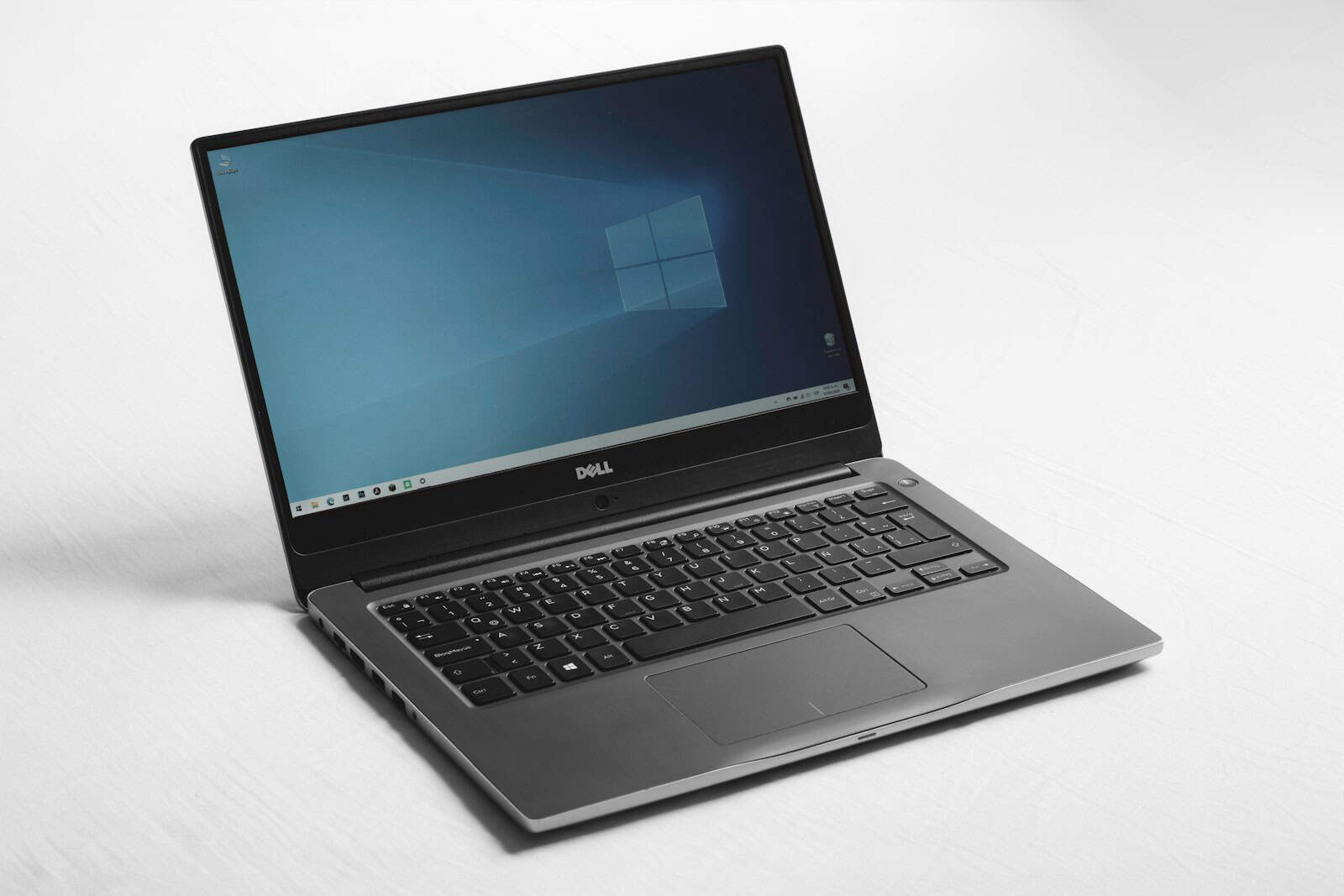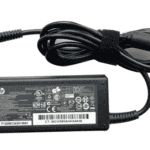Is your Dell laptop acting up and refusing to start? A corrupted BIOS might be the culprit. The Basic Input/Output System (BIOS) is essential for your laptop to function properly, and when it fails, your computer won’t boot at all. Dell laptops have specific recovery methods that can help you repair a corrupted BIOS without sending your device for professional repair.
The good news is that Dell computers come with built-in BIOS recovery options. You don’t need special technical skills to fix this problem. The process typically involves pressing and holding the Control (Ctrl) and Escape (Esc) keys while turning on your laptop. This action triggers the BIOS recovery screen where you can select options to restore your system’s functionality.
Before attempting any BIOS recovery, make sure to unplug all external devices and ensure your laptop has sufficient battery power or is connected to a power source. This prevents interruptions during the recovery process which could cause further damage to your system.
Repairing the BIOS on Your Dell Laptop: Step-by-Step Guide
BIOS issues on a Dell laptop can show up in different ways — boot failures, freezing at the Dell logo, fan spinning but no display, or cryptic error codes. Whether your BIOS got corrupted during an update, after a power failure, or just suddenly stopped working, there are ways to bring your laptop back to life without replacing the motherboard. Here’s how to approach BIOS repair depending on the situation you’re facing.
Signs Your BIOS May Be Corrupted
Before diving into fixes, it’s important to confirm you’re dealing with a BIOS issue. Common symptoms include:
- Laptop powers on but screen stays black
- Beeping sounds or blinking LED patterns
- Error message like “BIOS corruption detected”
- Dell logo appears but then nothing happens
- Failed BIOS update attempt
If you’re seeing any of these, chances are the BIOS firmware is either incomplete, corrupt, or misconfigured.
First: Perform a Hard Reset
Before doing anything technical, try this:
- Power off the laptop.
- Disconnect the power adapter.
- Remove the battery (if it’s removable).
- Press and hold the power button for 30 seconds to drain residual power.
- Reconnect the power (without battery, if removable).
- Turn the laptop on.
Sometimes, this basic reset clears out glitches caused by failed startup attempts.
Use BIOS Recovery Mode (BIOS Auto-Recovery)
Dell laptops often include a built-in BIOS recovery feature that activates automatically if corruption is detected. You can also trigger it manually:
- Power off the laptop.
- Press and hold the CTRL + ESC keys.
- While holding those keys, plug in the power adapter.
- Continue holding CTRL + ESC, then press the power button.
- Release all keys when you see the Dell logo or BIOS Recovery screen.
If the BIOS recovery environment loads, follow the on-screen instructions to repair or restore the BIOS.
Flash the BIOS Using a USB Drive (BIOS Recovery File)
If automatic recovery doesn’t work, you can manually flash the BIOS from a USB:
- Use another working computer to download the correct BIOS file for your Dell model from Dell’s official site.
- Rename the BIOS file to match the recovery format expected by your system:
- Usually something like
BIOS_IMG.rcvor the exact BIOS.exerenamed properly.
- Usually something like
- Format a USB flash drive to FAT32.
- Copy the BIOS file to the root of the drive (no folders).
- Insert the USB into your dead Dell laptop.
- Use the same CTRL + ESC method to enter BIOS recovery mode.
- Follow prompts to flash the BIOS from the USB.
This method works best if your system isn’t booting at all but still powers on.
Reseat or Replace the CMOS Battery
Sometimes, clearing the CMOS can reset a corrupted BIOS configuration:
- Power down the laptop completely.
- Remove the back panel (if user-accessible).
- Locate the CMOS coin-cell battery — it’s usually silver and about the size of a nickel.
- Carefully unplug or pop it out.
- Wait 5–10 minutes, then reinsert it.
- Power the laptop back on.
This can sometimes reset the BIOS to defaults and bypass bad configurations or corruption.
Use Dell SupportAssist OS Recovery (If Available)
Newer Dell systems come with a hidden recovery partition that includes BIOS tools:
- Power on the laptop and press F12 repeatedly to open the boot menu.
- Choose SupportAssist OS Recovery.
- Navigate to System Repair or Tools, and look for options related to BIOS repair or diagnostics.
This won’t work on every Dell model, but if it’s available, it’s a safe and user-friendly repair path.
What to Do If Nothing Works
If none of the above methods repair your BIOS, you may be looking at one of the following:
- BIOS chip failure – requires professional reprogramming or replacement.
- Motherboard damage – rare, but possible if voltage or hardware damage occurred.
- Out-of-warranty repair – Dell offers flat-rate motherboard repairs for many models.
In extreme cases, a local repair shop with BIOS flashing tools can often bring a laptop back from what seems like permanent failure.
Preventing BIOS Problems in the Future
- Never interrupt a BIOS update once it starts — even closing the lid or bumping the power cord mid-update can cause corruption.
- Only install BIOS updates when absolutely necessary (e.g., for hardware support or critical fixes).
- Use a UPS or make sure your battery is charged before flashing firmware.
- Stick with BIOS files downloaded directly from Dell’s support pages.
The BIOS might be one of the most delicate parts of your laptop, but it’s also one of the most repairable if you catch the issue early. With the right steps — and a bit of patience — most Dell laptops can be brought back from even a black-screened, unresponsive state.
Key Takeaways
- Press and hold Ctrl+Esc while turning on your Dell laptop to access the BIOS recovery screen.
- Always ensure your laptop has power during BIOS recovery to prevent further damage.
- Different Dell models may have slightly different recovery methods, so check your specific model’s documentation.
Understanding BIOS in Dell Laptops
The BIOS system in Dell laptops serves as the critical foundation for your computer’s operation. It controls hardware initialization and provides the interface between your computer’s hardware and operating system.
The Role of BIOS in Your Dell Laptop
BIOS (Basic Input/Output System) is firmware that activates when you first turn on your Dell laptop. It performs the Power-On Self-Test (POST) that checks if your hardware components like RAM, processor, and storage drives are working properly.
Think of BIOS as a middle-man between your computer’s hardware and the operating system. It stores important settings like date, time, boot sequence, and hardware configurations.
Without a properly functioning BIOS, your Dell laptop won’t start up. The BIOS identifies and initializes system devices such as the display, keyboard, and hard drive before handing control to the operating system.
Most Dell laptops let you access BIOS settings by pressing F2 repeatedly during startup when the Dell logo appears.
Differences Between BIOS, UEFI, and EFI
Modern Dell laptops typically use UEFI (Unified Extensible Firmware Interface) rather than traditional BIOS. UEFI is essentially a newer, more advanced version of BIOS with significant improvements.
UEFI offers several advantages over traditional BIOS:
- Faster boot times due to more efficient initialization
- Support for drives larger than 2TB
- Enhanced security features including Secure Boot
- Graphical interface that’s easier to navigate with mouse support
EFI (Extensible Firmware Interface) was UEFI’s predecessor. Intel developed it, and later it evolved into UEFI through industry collaboration.
While many people still refer to their computer’s firmware as “BIOS,” newer Dell laptops actually run UEFI firmware. You can still access it the same way – by pressing F2 at startup.
Preparation for BIOS Repair
Before attempting to repair a Dell laptop’s BIOS, proper preparation is essential to ensure a smooth recovery process and minimize risks. Having the right tools and understanding the situation will significantly increase your chances of success.
Identifying the Need for BIOS Repair
Your Dell laptop may need BIOS repair if it won’t start up properly or gets stuck in a boot loop. Watch for these common signs:
- Computer won’t turn on, but power lights are active
- Screen remains black during startup
- System freezes at the Dell logo
- Continuous automatic repair attempts
- Error messages mentioning BIOS corruption
Sometimes these problems happen after a failed BIOS update or power outage during an update. If your laptop shows these symptoms, the BIOS might be corrupted and need fixing.
Check your laptop model first. Different Dell models have specific recovery methods. Write down your exact model number (like XPS 13 9310 or Inspiron 15 7000) from the sticker on the bottom of your laptop.
Ensuring Data Safety Before Repair
Backup your important files before attempting any BIOS repair. A corrupted BIOS might lead to data loss during the repair process.
Backup options:
- External hard drive
- Cloud storage (Google Drive, OneDrive)
- Another computer on your network
For complete protection, create a full system image using EaseUS Todo Backup. This software saves an exact copy of your entire system that can be restored later.
If your laptop still boots occasionally, quickly transfer important documents, photos, and files to a safe location. Don’t risk losing irreplaceable data during repairs.
Write down any important passwords and account information you might need later. Sometimes BIOS repairs can reset certain system settings.
Creating a Bootable USB Drive
Many BIOS repairs require a bootable USB drive with recovery tools or BIOS files.
What you’ll need:
- USB drive (8GB or larger)
- Access to another working computer
- Dell BIOS update file for your specific model
Steps to create a bootable USB:
- Download the latest BIOS update for your exact Dell model from Dell’s support website
- Insert your USB drive into a working computer
- Format the USB drive to FAT32 file system
- Create a folder named “BIOS” on the USB drive
- Copy the downloaded BIOS file into this folder
For some repairs, you might need the Dell recovery tool instead. Visit Dell’s support site and search for “BIOS Recovery” tools for your specific laptop model. Follow the instructions to create the proper recovery media.
Starting the BIOS Recovery Process
When your Dell laptop refuses to boot properly due to BIOS issues, you can often fix the problem without professional help. Dell computers have built-in recovery methods that allow you to restore corrupted BIOS settings or firmware.
Accessing the BIOS Setup
To begin the BIOS recovery process on a Dell laptop, you’ll first need to shut down your computer completely. Disconnect all power sources, including the AC adapter and battery (if removable). This ensures a clean start for the recovery process.
Press and hold the Power button for 15-20 seconds to drain any residual power. This step is crucial because lingering electrical charge can interfere with the recovery procedure.
For most Dell models, you’ll need to press either F2 or Del key immediately after powering on the laptop to enter the standard BIOS setup. However, if your BIOS is severely corrupted, these normal access methods might not work.
![Dell BIOS Setup Screen]
Navigating to BIOS Recovery Page
If your Dell laptop won’t boot normally, you’ll need to use the emergency BIOS recovery method. Press and hold the Ctrl and Esc keys simultaneously, then connect the power adapter while continuing to hold these keys.
Keep holding the keys until you see the BIOS Recovery screen appear. This special recovery interface is different from the normal BIOS setup and is specifically designed for repair operations.
On the recovery page, you’ll see several options. Select “Recover BIOS” or “Recover the BIOS” using the arrow keys and press Enter. Some Dell models might display it as “Recover BIOS (using currently flashed BIOS)”.
The recovery process will start automatically and typically takes 5-10 minutes to complete. Your laptop screen might flash or go blank during this process – this is normal.
Executing BIOS Update on Dell Laptop
Updating your Dell laptop’s BIOS is an important maintenance task that can fix system bugs and improve performance. The process requires careful steps to avoid potential problems.
Methods to Update Dell BIOS
The most common way to update Dell BIOS is through the Dell Support website. First, identify your laptop’s exact model and service tag found on the bottom of your device. Go to dell.com/support and enter this information to find the correct BIOS update file.
For Windows users, Dell offers two update methods:
Windows-based installation: Download the BIOS update file, close all programs, and run the executable. Follow the on-screen instructions and don’t interrupt the process.
BIOS menu method: Download the BIOS file to a USB drive. Restart your laptop and press F12 repeatedly to enter the boot menu. Select BIOS Flash Update and follow the prompts.
Always connect your laptop to AC power during updates. Battery failure during a BIOS update can cause serious problems.
Dealing with BIOS Update Failure
If your Dell laptop won’t boot after a failed BIOS update, don’t panic. Most Dell laptops have built-in recovery options. Try the CTRL+ESC recovery method first. Turn off your laptop completely, then hold down CTRL+ESC while pressing the power button.
When the recovery screen appears, select “Recover the BIOS” option. Let the system complete the recovery process without interruption.
For severe cases, you may need to clear the NVRAM. This requires:
- Removing the main battery (if possible)
- Removing the CMOS battery (may require opening the laptop)
- Pressing the power button for 30 seconds to release residual power
If these methods fail, contact Dell technical support. Some models may need professional service or motherboard replacement after severe BIOS corruption.
Troubleshooting BIOS Issues
When your Dell laptop faces BIOS problems, several troubleshooting methods can help get your system back up and running. These techniques address common issues from boot failures to corrupted BIOS files.
Resetting NVRAM to Resolve BIOS Problems
NVRAM (Non-Volatile Random Access Memory) stores important system settings. Resetting it can fix many BIOS-related issues on Dell laptops. To reset NVRAM:
- Turn off your laptop completely
- Unplug the power adapter and remove the battery (if possible)
- Press and hold the power button for 15-20 seconds
- Reconnect the power source and turn on the laptop
This process clears temporary settings that might be causing conflicts. Watch for the Dell logo during startup – if it appears normally, the reset worked. Some newer Dell models might require you to press and hold specific keys like F2 during startup to access BIOS settings where you can reset to defaults.
Performing Hard Reboot
A hard reboot forces your Dell laptop to completely restart when normal methods fail. This can resolve many BIOS boot issues:
- Power down your laptop completely
- Disconnect all external devices
- Remove the battery (if possible) and unplug the power cord
- Hold the power button for 30 seconds to discharge residual electricity
- Reconnect the power source only (leave battery out if removed)
- Press the power button to start the laptop
For newer Dell models with internal batteries, hold down the power button for 15-20 seconds. If successful, the laptop should restart with the BIOS functioning properly.
Using Command Prompt to Fix BIOS Issues
Command Prompt offers advanced solutions for Dell BIOS problems when other methods fail. These commands can repair system files that interact with BIOS:
- Boot into Windows if possible (or use recovery media)
- Open Command Prompt as administrator
- Run system file checker by typing:
sfc /scannow - Use DISM command if needed:
DISM /Online /Cleanup-Image /RestoreHealth
For Dell-specific BIOS recovery, use the CTRL+ESC key combination while turning on your laptop. This triggers Dell’s built-in BIOS recovery tool on most models. Select “Recover the BIOS” from the menu that appears. This option uses the currently installed BIOS to fix corrupted files without needing additional media.
Navigating and Configuring BIOS Options
The BIOS (Basic Input/Output System) is your gateway to controlling how your Dell laptop starts up and operates. Knowing how to access and set up these options can help you solve many common boot problems.
Accessing the Boot Menu
To enter the BIOS on your Dell laptop, restart the computer and press the F2 key several times when the Dell logo appears on screen. Some Dell models may use a different key, so watch for on-screen instructions during startup. If you miss the timing window, simply restart and try again.
For blind navigation of the BIOS (if your screen isn’t working), wait for the NumLock LED to light up, then press F2. You can then press F9 or Alt+F to load default settings if needed.
To access the boot menu directly without entering full BIOS setup, press F12 repeatedly during startup instead of F2. This menu lets you choose which device to boot from without changing permanent settings.
Setting Up BIOS Configuration
Once inside the BIOS, use the arrow keys to navigate between options. The Enter key selects an option, while Esc typically moves back to the previous menu. Most Dell BIOS interfaces are divided into tabs or sections for easier navigation.
Common settings you might need to adjust include:
- Boot sequence: Change the order of devices your computer tries to boot from
- SATA operation: Switch between RAID and AHCI modes (requires restart)
- Secure Boot: Enable or disable for compatibility with certain operating systems
- Legacy Boot: Toggle between UEFI and Legacy boot modes
If you make changes, remember to save before exiting. Usually, this is done by pressing F10 or by selecting “Save and Exit” from the menu. Without saving, your changes won’t take effect.
For BIOS recovery in case of corruption, Dell provides a recovery tool. Press and hold the Control and Escape keys until the recovery page appears, then select “Recover BIOS” and wait for completion.
Final Steps in BIOS Repair for Dell Laptops
After starting the BIOS recovery process, you need to complete several crucial steps to ensure your Dell laptop returns to normal operation. These final steps require careful attention to detail and proper sequencing.
Installing BIOS in Order
When installing a new BIOS on your Dell laptop, following the correct sequence is vital. First, make sure your laptop has at least 10% battery charge and connect the power adapter to prevent interruptions during the process.
If you’re using the Dell BIOS Recovery Tool, the system will automatically install the correct BIOS version. Look for progress indicators on screen – these usually appear as percentage complete or status bars.
Don’t interrupt the installation process by pressing keys or powering off the laptop. A typical BIOS installation takes 2-5 minutes to complete. The system will restart automatically when finished.
For manual BIOS updates, always install versions in sequential order if you’ve missed several updates. Skipping versions can sometimes cause compatibility issues or incomplete fixes.
Ensuring Successful BIOS Recovery
After the BIOS installation completes, verify that the recovery was successful. When your Dell laptop restarts, press F2 or F12 (depending on your model) to enter BIOS setup and check the BIOS version number.
If the laptop boots normally to Windows, this typically indicates a successful recovery. Run a system diagnostic test to check for any remaining hardware issues. On Dell laptops, press F12 during startup and select “Diagnostics.”
If the recovery fails, you might see error messages or the laptop might not start properly. In this case:
- Try the recovery process again
- Use a different USB drive if applicable
- Contact Dell technical support for advanced assistance
Remember to remove any recovery USB drives after successful BIOS installation. Update any drivers that might have been affected by the BIOS issues, especially chipset and graphics drivers.
Frequently Asked Questions
Dell laptop BIOS issues can be fixed through several recovery methods. These methods include using built-in recovery tools, key combinations, and troubleshooting techniques specific to Dell computers.
How can I use the Dell BIOS Recovery tool to recover my laptop’s BIOS?
To use the Dell BIOS Recovery tool, first turn off your computer completely. Then press and hold the Ctrl+Esc keys while turning on the computer. This key combination triggers the BIOS recovery mode on Dell computers.
When prompted, select “Recover the BIOS (using the currently flashed BIOS).” The system will start the recovery process automatically. This process may take several minutes to complete.
Wait for the recovery to finish without interrupting it. Your computer will restart once the process is done.
What steps are required to create a Dell BIOS recovery USB?
Download the latest BIOS update file for your specific Dell model from the official Dell support website. Make sure you select the correct model number to get the right BIOS file.
Format a USB drive to FAT32 file system. Copy the downloaded BIOS file to the root directory of the USB drive.
Rename the BIOS file according to Dell’s requirements, usually to something like “BIOS.exe” or as specified in Dell’s documentation for your model.
Insert the USB into your Dell laptop, restart the computer, and press F12 repeatedly to access the boot menu. Select the USB drive to start the BIOS recovery process.
Why is the Ctrl+Esc recovery method not working on my Dell laptop and how can I fix it?
The Ctrl+Esc method might not work if your keyboard is malfunctioning. Try connecting an external USB keyboard to see if that resolves the issue.
Some newer Dell models use different key combinations. Check your model’s documentation or Dell’s support website for the correct keys. Common alternatives include Fn+Esc or End+Esc.
If keyboard methods fail, try removing the battery (if possible) and the power cord. Hold the power button for 30 seconds to discharge residual power. Reconnect everything and try again.
What should I do if the BIOS corruption auto-recovery process is initiated on my Dell laptop?
If your Dell laptop automatically starts a BIOS recovery process, do not interrupt it. Allow the process to complete even if it seems to take a long time.
Make sure your laptop is connected to a power source during the recovery to prevent power loss. A power interruption during BIOS recovery can cause permanent damage.
If the auto-recovery completes but problems persist, try a manual BIOS reset. This can be done through the BIOS menu or by using the motherboard jumper method if available on your model.
What are the possible reasons for a Dell BIOS auto-recovery to become stuck, and how can it be resolved?
A stuck BIOS recovery might be caused by hardware issues like a failing power supply or damaged motherboard components. Try connecting to a different power outlet or adapter if available.
Outdated or corrupted recovery files can also cause the process to stall. Create a fresh BIOS recovery USB with the latest files from Dell’s website.
If the recovery remains stuck for more than 30 minutes, perform a hard reset. Disconnect all power sources, hold the power button for 30 seconds, then reconnect and try again.
Are there tips for identifying and troubleshooting BIOS problems on a Dell laptop?
Common BIOS problem symptoms include failure to boot, system freezing at the Dell logo, or error messages during startup. Record any error codes that appear as they help identify specific issues.
Check if your system makes any beeping sounds during startup. Dell computers use beep codes to signal hardware problems that might be related to BIOS issues.
Before attempting complex recovery methods, try simple fixes like removing all external devices, resetting BIOS to default settings, or updating the BIOS through normal methods if the system is still accessible.
For persistent problems, check Dell’s support forums for your specific model. Many BIOS issues are model-specific and other users may have found solutions.







